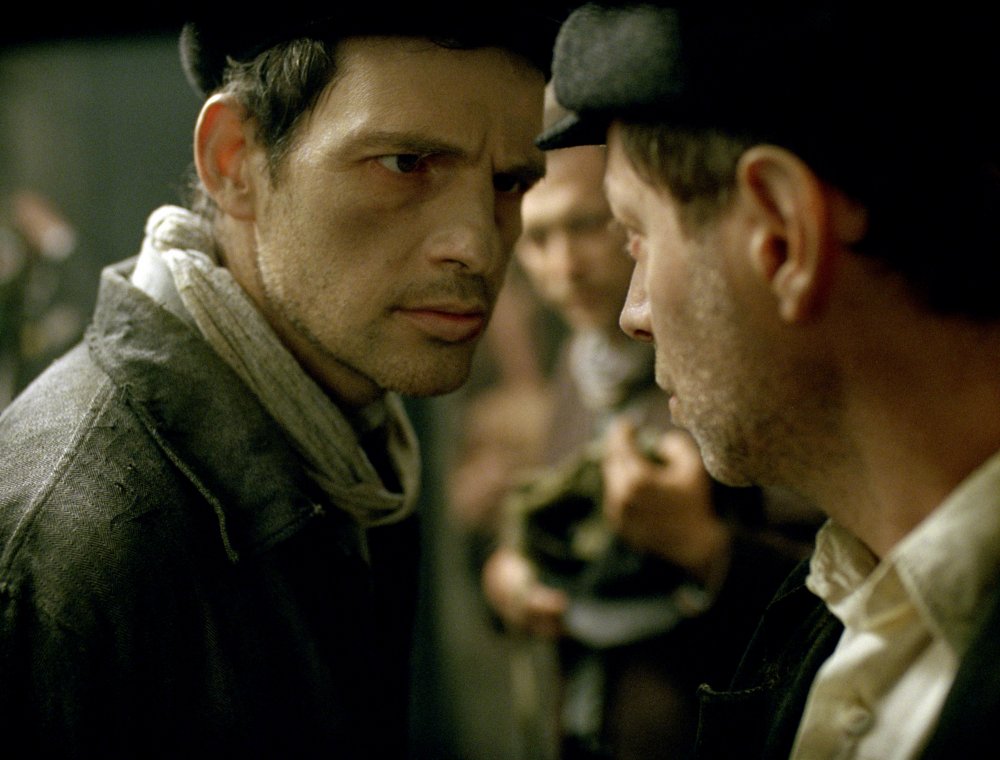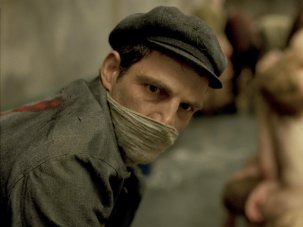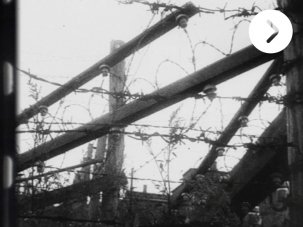Spoiler alert: this review discusses the ending of the film.
Has there ever before been a film where so much of the action happens off screen? For much of its length, László Nemes’s film – amazingly, his feature debut – holds its close-up gaze on the grimly obsessed features of its protagonist, Saul Ausländer (Géza Röhrig) – or, Dardennes-style, on the back of his head. Meanwhile the soundtrack assaults our ears with a cacophony of barked orders in German (“Schnell! Arbeit! Los!”), a hubbub of voices in Hungarian, Polish and Yiddish, police whistles, gunshots, screams, metallic clankings and grindings. Much of what does show on the screen is at the edge of the frame or out of focus, with figures appearing as dark, fuzzy shadows.
Hungary/France/Israel/Bosnia and Herzegovina/USA 2015
Certificate 15 107m 5s
Director László Nemes
Cast
Saul Ausländer Géza Röhrig
Abraham Warszawski Levente Molnár
Eli Biederman, oberkapo Urs Rechn
bearded prisoner Todd Charmont
Rabbi Frankel, ‘Kályhás’ rabbi Jerzy Walczak
Balázs Farkas Gergö Farkas
Sándor Zsótér Saul’s son
Dolby Digital
In Colour
[1.33:1]
Subtitles
Hungarian theatrical title Saul fia
UK release date 29 April 2016 in cinemas and on VoD
Distributor Curzon Artificial Eye
sonofsaul.co.uk
► Trailer
Some of the time we’re left to guess what the offscreen noises indicate. At other times it’s all too easy to tell, as in the devastating opening sequence when the latest trainload of Jewish prisoners, having hung their clothes on hooks, are ushered naked into the shower room while a reassuring voice tells them that their various skills will be needed in the camp, and that soup and hot coffee will be ready for them once they’ve showered. “Don’t forget your hook number,” the voice adds solicitously. The door closes with a heavy, ominous clang; a moment later we hear muffled screams and hammerings on the door. Not for long, though.
Nemes uses that same lethal clang to close several sequences, pairing it with a cut to black, as if to convey that everyone held in the camp, no matter their status, is effectively in the death chamber. From this perspective, Saul’s desperate quest to find a rabbi to say Kaddish over the dead boy he claims is his son is perhaps ultimately no more futile than the plotting of his fellow Sonderkommandos (privileged prisoners who help to control the rest) to escape. “You failed the living for the dead,” he’s told when his monomania causes him to botch a vital mission; but from this abyss – as the film’s last offscreen sound effect tells us with grim finality – no one in the end can escape.
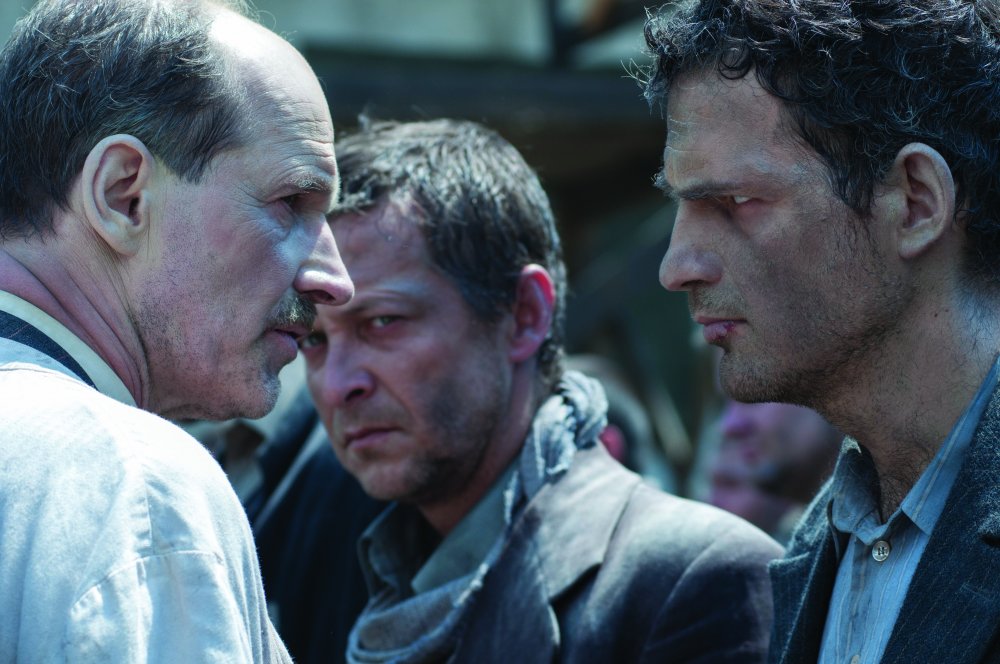
Is the boy Saul finds gasping and all but dead, sole survivor of the gas chamber, really his son? A fellow prisoner who evidently knew Saul before insists that he never had a son, though if he did and the boy was born (as he suggests) outside his marriage, there’s a hint that the young woman called Ella, with whom he has a charged, near-wordless exchange, might be the mother.
In the final analysis it hardly matters. In the film’s closing moments, Saul sees another boy, alive this time, and his joyous smile tells us that this putative son, real or not, has become his purpose – a personal expiation for what he’s done to his fellow Jews and a reason for persisting. As Nemes commented when he accepted his Oscar for Best Foreign Language Film earlier this year, “Even in the darkest hours, there might be a voice within us that allows us to remain human.”
We’re never told in which camp the film is set, though given that all Hungarian Jews were sent to Auschwitz-Birkenau and that an actual rebellion by Sonderkommandos took place there in late 1944, we can assume this is the intended location. An indication of the date comes in a snatch of whispered conversation suggesting that Soviet forces are about to take Krakow, which would place the action in January 1945. Certainly the increasing urgency, even desperation, with which the prisoners are despatched would bear this out; since the ovens are full of bodies, a later trainload of new arrivals bypass the gas chamber altogether, and are shoved straight into a pit, shot and burnt.
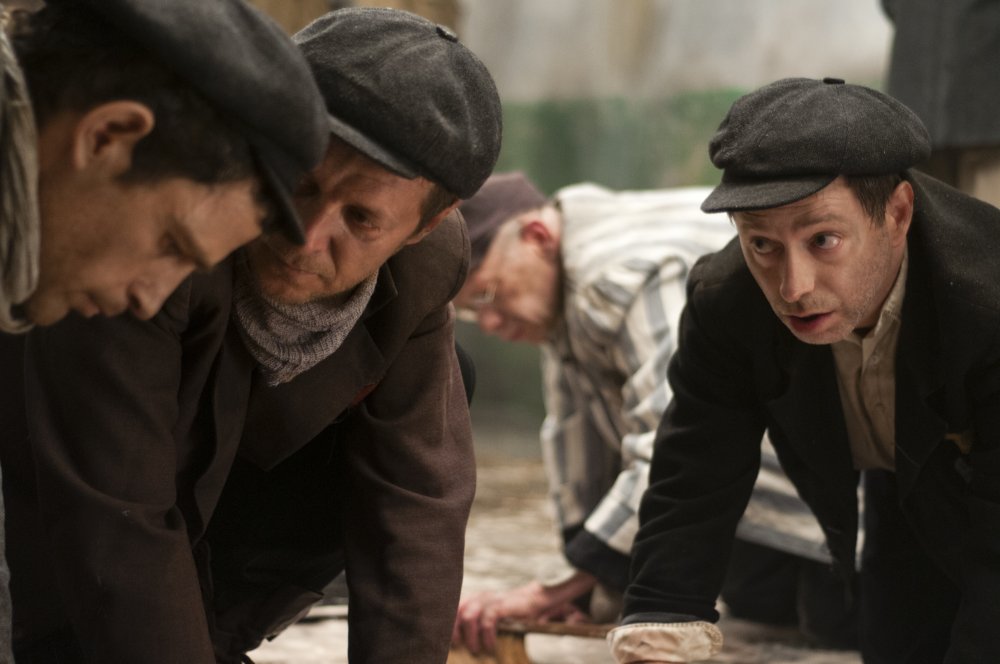
All this chimes with the callous terminology of assembly-line extermination: dead bodies are “pieces”, money and valuables harvested from the dead are “the shiny”. Repeatedly, we’re shown the Sonderkommandos shovelling up great heaps of the grey ashes to which the camp’s victims have been reduced, and whose dust chokes the air – the living, soon to die themselves, are literally breathing in the dead. At the same time, there’s a determination that future generations should know the truth: we see inmates taking photographs with smuggled cameras, or writing diaries to be concealed in the hope of later discovery, messages from the dead to the living.
It has sometimes been suggested that there’s little more to be said, in cinematic terms, about the unspeakable horrors of the Holocaust, that it has been churned over too often. The single-minded power and visceral immediacy of Nemes’s achievement, rightly acclaimed and awarded, prove otherwise.
In the May 2016 issue of Sight & Sound
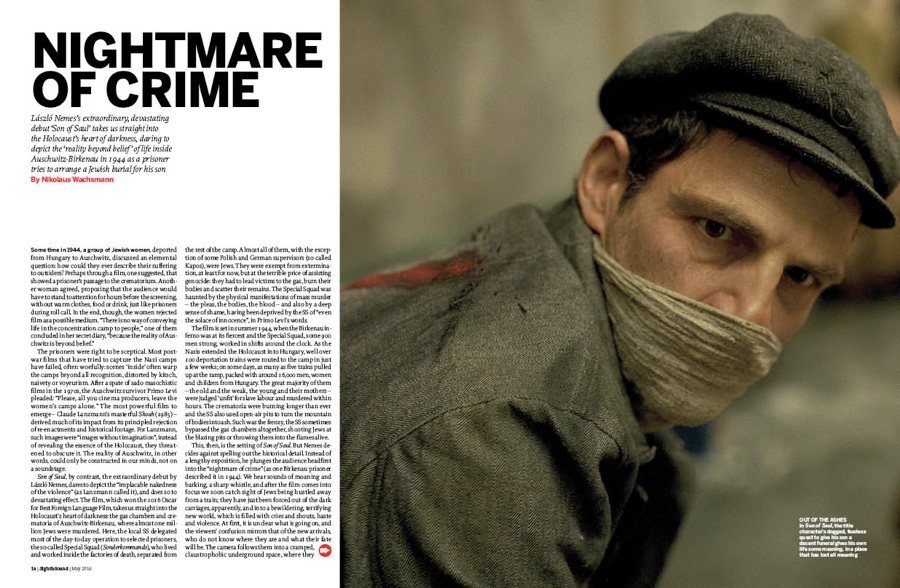
Nightmare of crime
László Nemes’s extraordinary, devastating debut Son of Saul takes us straight into the Holocaust’s heart of darkness, daring to depict the ‘reality beyond belief’ of life inside Auschwitz-Birkenau in 1944 as a prisoner tries to arrange a Jewish burial for his son. By Nikolaus Wachsmann.
-
Sight & Sound: the May 2016 issue

Down, dark and dirty with the psychological western, plus the women of the west, Son of Saul, Arabian Nights, The Brand New Testament, Agnieszka...
-
The Digital Edition and Archive quick link
Log in here to your digital edition and archive subscription, take a look at the packages on offer and buy a subscription.




